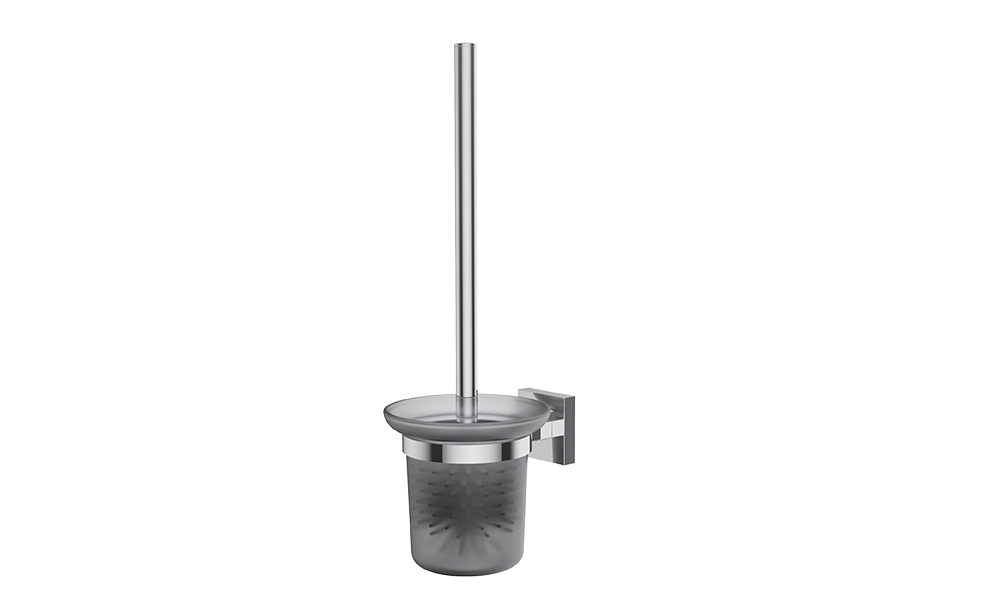
Cuando se trata de higiene del baño, la mayoría de la gente se centra en limpiar superficies visibles como lavabos, inodoros y espejos. Sin embargo, un elemento que comúnmente se pasa por alto es el portaescobillas. Con el tiempo, este pequeño recipiente puede convertirse en una fuente oculta de bacterias, olores desagradables y moho. Esta guía le explicará la importancia de limpiar el portaescobillas del inodoro, la frecuencia con la que debe hacerlo y la forma más eficaz de limpiarlo.
El portaescobillas está frecuentemente expuesto a la humedad, gérmenes y residuos del inodoro. Si no se limpia con regularidad, puede convertirse en un caldo de cultivo para bacterias dañinas y moho. Esto no sólo provoca malos olores, sino que también supone un riesgo potencial para la salud.
Limpiar el portaescobillas ayuda a:
Prevenir el crecimiento de bacterias como E. coli y salmonella.
Elimina olores a humedad o desagradables.
Prolonga la vida útil de tu escobilla y soporte para el baño
Mantener la limpieza general del baño.
Para uso doméstico general, limpiar el portaescobillas una vez por semana es una buena práctica. Si su baño es utilizado por varias personas o si el cepillo se usa con frecuencia, considere limpiarlo cada tres a cinco días.
Para limpiar eficazmente el portaescobillas, prepare los siguientes elementos:
guantes de goma
Limpiador desinfectante o lejía doméstica
Agua caliente
Un balde o palangana
Un cepillo pequeño para fregar o un cepillo de dientes viejo.
Toallas de papel o un paño limpio.
| Paso | Qué hacer |
|---|---|
| Ponte guantes | Utilice guantes de goma y retire la escobilla del soporte. |
| Vaciar el soporte | Vierta el agua en el inodoro con cuidado para evitar salpicaduras. |
| Remojar el soporte | Llene un balde con agua caliente y desinfectante o lejía. Remojar durante 10 a 15 minutos. |
| Frote las superficies | Utilice un cepillo o un cepillo de dientes viejo para limpiar todas las zonas, especialmente el fondo. |
| Enjuague bien | Enjuague el soporte con agua caliente para eliminar todo el limpiador y la suciedad. |
| Secar el soporte | Limpiar con un paño o toallas de papel. Déjelo secar al aire si es posible. |
| Desinfectar el cepillo | Remoje el cepillo en desinfectante, enjuáguelo y séquelo antes de volver a colocarlo. |
Utilice siempre guantes de goma para evitar el contacto directo con bacterias y productos químicos de limpieza fuertes. Saque con cuidado la escobilla del soporte.
Vierta el agua estancada del soporte en el inodoro. Tenga cuidado para evitar salpicaduras, que podrían propagar gérmenes.
Llene un balde o el lavabo del baño con agua caliente. Agrega un limpiador desinfectante o una taza de lejía. Sumerge el portaescobillas en esta solución y déjalo en remojo durante al menos 10 a 15 minutos.
Después de remojar, use un cepillo para fregar o un cepillo de dientes viejo para limpiar todas las superficies del soporte. Concéntrese especialmente en las esquinas inferiores e interiores donde la suciedad tiende a acumularse.
Enjuague bien el soporte con agua caliente para eliminar los restos de solución limpiadora y la suciedad suelta.
Utilice toallas de papel o un paño limpio para secar el soporte. Si es posible, colóquelo en un área ventilada para que se seque completamente al aire antes de volver a colocar el cepillo en el interior.
Mientras lo hace, es una buena idea desinfectar también la escobilla del baño. Remójelo en un balde aparte de desinfectante o lejía, enjuáguelo bien y déjelo secar antes de devolverlo al soporte.
un limpio portaescobillas contribuye a un ambiente de baño más saludable y agradable. Aunque es fácil pasarlo por alto, prestarle atención regular puede marcar una gran diferencia. Si sigue los pasos descritos anteriormente y adopta buenos hábitos de mantenimiento, podrá mantener su baño más limpio e higiénico con un mínimo esfuerzo.